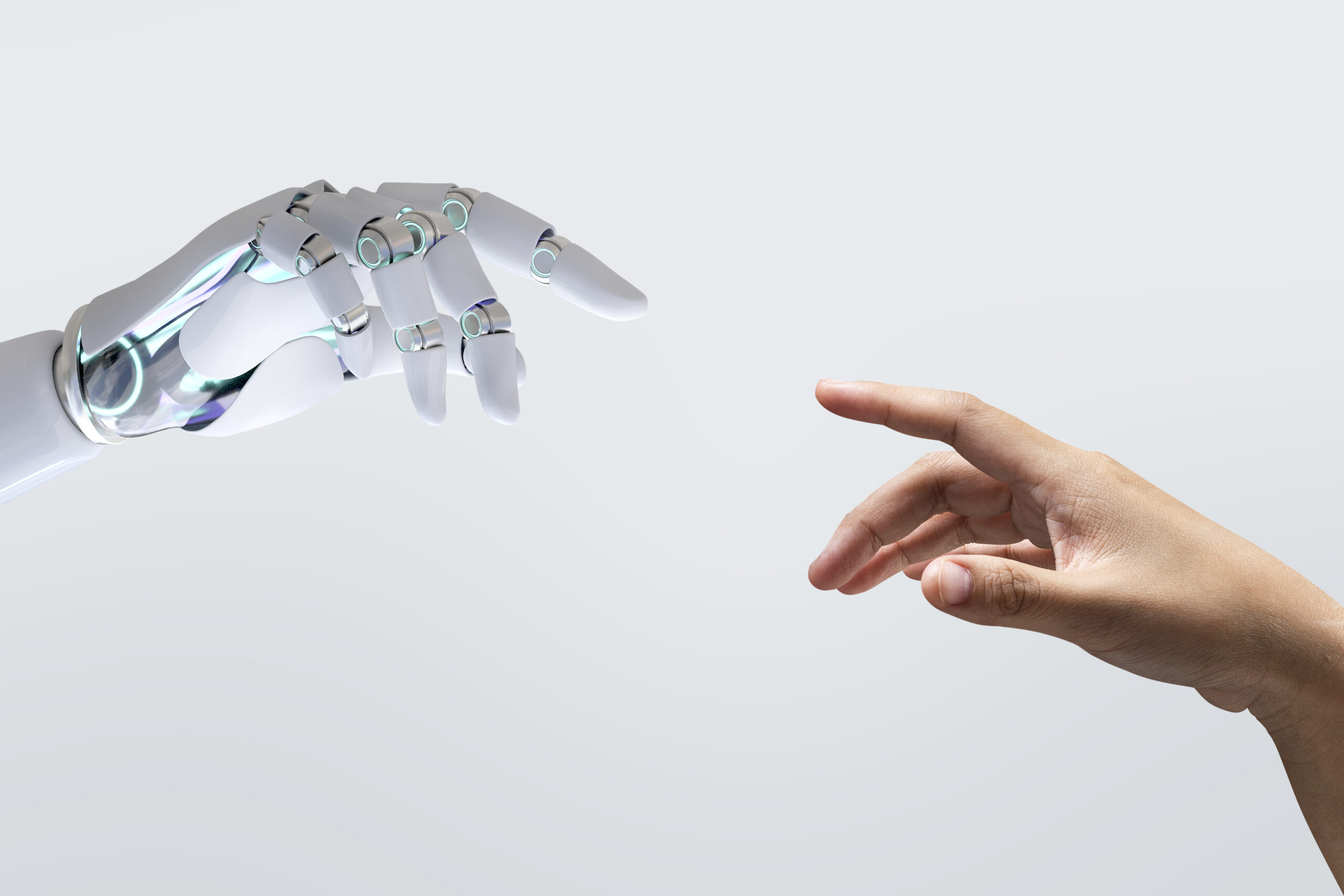Exclusive Neuroject Article: Conventional approaches are frequently connected with inefficiency, project delays, and safety issues in the construction business. But the rise of digital transformation technology has brought about substantial changes in the building industry. These technologies have significantly improved productivity, efficiency, and safety while eliminating conventional construction methods.
In this article, the top 11 digital transformation technologies that have significantly impacted the construction sector will be thoroughly discussed. Each of these innovations—from the adoption of Building Information Modelling (BIM) to the use of Augmented Reality (AR) and Virtual Reality (VR)—has profoundly altered how construction projects are organized, created, and carried out.
Table of Contents
What do Digital Transformation Technologies mean?
The term “digital transformation technologies” refers to a broad category of cutting-edge digital tools, systems, and tactics that businesses can utilize to revolutionize their operations, improve productivity, efficiency, and agility, and adjust to the quickly changing digital environment. The heart of digital transformation is to utilize digital transformation technologies to make major changes in how businesses operate, provide value to customers, and maintain market competitiveness.
To remain relevant in the digital age, this calls for reevaluating current procedures, implementing fresh corporate strategies, and embracing digital transformation technologies improvements. Notably, digital transformation technologies have redefined customer experiences, as businesses utilize tools like Customer Relationship Management (CRM) software, chatbots, and personalized marketing campaigns to engage with customers in more meaningful ways. By understanding customers better, addressing their needs, and providing tailored products and services, organizations can foster stronger connections and loyalty.
Internally, digital transformation technologies have brought about profound changes, streamlining operations within organizations. Automation technologies, such as robotic process automation (RPA), have simplified repetitive tasks, reducing errors, and driving up productivity while minimizing operational costs. Moreover, these digital transformation technologies have facilitated enhanced communication and collaboration among teams, breaking down traditional organizational barriers and promoting seamless teamwork.
Nevertheless, the integration of digital transformation technologies has not been without challenges. Organizations often encounter obstacles related to data security, privacy concerns, and the need to upskill their workforce to adapt to technological advancements. However, the benefits of digital transformation, including heightened efficiency, improved customer satisfaction, and enhanced innovation, far outweigh these challenges.
In conclusion, digital transformation technologies have emerged as the driving force behind the modernization of businesses and industries. Organizations that embrace these digital transformation technologies and adapt to the digital landscape are better positioned to maintain their competitiveness, deliver value to customers, and navigate the ever-changing business environment. As technology continues to advance, the potential for digital transformation technologies is boundless, and organizations that proactively embrace these changes are well-positioned for sustained success and growth.
Suggested article for reading: Discover Digital Transformation and Industry 4.0
Building Information Modeling (BIM)
A technology that has had a significant impact on the building sector is known as “Building Information Modelling” (BIM). It involves creating precise digital representations of a building’s structural and operational elements. Collaboration between numerous stakeholders, including architects, engineers, contractors, and owners, is facilitated by digital transformation technologies BIM. BIM uses a 3D modeling approach instead of conventional 2D drawings, enabling stakeholders to see the complete project before construction ever starts.
The BIM model’s data integration allows for real-time coordination and reduces errors. Better project outcomes, cost-effectiveness, and resource allocation are the results of this digital transformation technologies collaborative strategy. BIM dramatically lowers project risks and delays by anticipating future conflicts and problems.
Additionally, BIM makes it possible to incorporate important data on building components and materials, enabling effective digital transformation technologies facility management, and upkeep after construction. Facility managers can maintain optimal building performance, which lowers operating costs and increases building lifespan, by having access to information about building systems and equipment.
Suggested article for reading: BIM in Construction

Proptech
Proptech, which stands for property technology, is a digital transformation technology that is reshaping the construction sector. It encompasses a diverse range of tools and solutions, such as virtual and augmented reality (VR/AR), drones, and sensors, all aimed at improving the management, maintenance, and operations of buildings.
Virtual and augmented reality play a crucial role in presenting design concepts and providing stakeholders with an immersive experience of a building’s potential appearance and functionality. By offering interactive virtual walkthroughs, stakeholders gain a deeper understanding of the design, leading to more informed decision-making and fewer design changes during construction.
Drones are utilized for aerial surveys and inspections, enabling faster and more accurate data collection. They prove invaluable for monitoring construction progress, assessing site conditions, and ensuring compliance with safety regulations. Real-time data obtained from drones allows construction managers to promptly identify potential issues and address them, ensuring smooth project execution.
Sensors installed within buildings enable real-time monitoring of various parameters, such as temperature, humidity, and occupancy. This data-driven approach facilitates predictive maintenance and intelligent energy management. For example, sensors can detect changes in occupancy levels and automatically adjust HVAC systems, resulting in optimized energy consumption and reduced operational costs.
By leveraging data-driven decision-making, Proptech optimizes building performance and enhances the overall occupant experience. The incorporation of advanced technologies in smart buildings attracts tenants seeking modern, efficient, and sustainable spaces, providing construction companies with a competitive edge in the market.
Suggested article’s for reading: Sensors in Construction | Drones in Construction

Artificial Intelligence (AI)
Artificial Intelligence (AI) has transformed the construction industry by automating repetitive tasks and significantly improving decision-making processes. AI algorithms possess the ability to analyze vast volumes of data from multiple sources, detecting patterns and anomalies that may go unnoticed by humans.
In the construction realm, AI finds application in diverse areas such as project scheduling, resource allocation, and risk assessment. By scrutinizing historical project data, AI optimizes project schedules, considering variables like weather conditions, resource availability, and potential risks. This data-driven scheduling approach leads to enhanced project timelines and better resource management through digital transformation technologies.
Safety management systems benefit from AI integration as well. AI’s predictive capabilities allow it to foresee potential hazards and take preventive measures, thus reducing accidents and injuries on construction sites using digital transformation technologies. For instance, AI-powered cameras can monitor construction sites in real-time, identifying unsafe practices and promptly alerting supervisors to intervene proactively.
AI’s predictive capabilities extend further to equipment maintenance. By analyzing sensor data from equipment, AI algorithms can anticipate possible equipment failures, enabling construction companies to conduct maintenance before expensive breakdowns occur through digital transformation technologies. This proactive approach maximizes equipment uptime, minimizes downtime, and optimizes maintenance costs.
Suggested article for reading: AI in Construction

Internet of Things (IoT)
The Internet of Things (IoT) encompasses a network of interconnected devices and sensors embedded in equipment, tools, and building components. In the construction industry, IoT integration enables real-time data collection, monitoring, and control through digital transformation technologies.
IoT-enabled devices offer valuable insights into various aspects of construction sites, including equipment performance, worker activities, and site conditions. By collecting and analyzing this data, construction managers can make well-informed decisions, optimize resource utilization, and enhance project management efficiency using digital transformation technologies.
For example, IoT-enabled sensors in construction equipment can monitor usage patterns, allowing for timely identification of potential maintenance needs to ensure equipment remains operational and minimize unexpected breakdowns.
Moreover, IoT promotes safety by facilitating remote monitoring and early detection of potential hazards. Wearable devices equipped with IoT sensors can track workers’ vitals and location, providing real-time data on their well-being and alerting supervisors in case of emergencies using digital transformation technologies.
The data gathered through IoT devices also proves valuable for optimizing construction processes. By analyzing patterns in worker movements, construction companies can identify bottlenecks and streamline workflows, leading to improved overall project efficiency. IoT’s integration in construction projects opens up possibilities for enhanced decision-making, increased safety, and more streamlined operations, making it an indispensable tool in the industry’s digital transformation technologies journey.
Suggested article’s for reading: IoT in Construction | IoT Sensor | Construction Monitoring

Cloud Computing
Cloud computing has become an essential component of digital transformation in the construction industry. With construction projects involving multiple stakeholders scattered across different locations, effective collaboration can be quite challenging. Cloud-based solutions offer a secure and scalable platform for storing, sharing, and analyzing project-related data in real-time.
Having data accessible from any location enables project teams to collaborate seamlessly, facilitating efficient communication and decision-making. Construction managers, architects, and engineers can access the most up-to-date project data in real-time, reducing delays and potential conflicts resulting from outdated information.
Cloud computing drives increased efficiency, reduced administrative overheads, and improved cost management by eliminating the need for physical data storage and providing a centralized collaboration platform. Additionally, the scalability of cloud-based solutions allows construction companies to easily adapt to changing project requirements, ensuring flexibility and responsiveness throughout the project lifecycle.
Suggested article for reading: Digital Transformation Failure
Geographic Information System (GIS)
Geographic Information System (GIS) technology has brought about a transformative impact on the construction industry by integrating various data sources, leading to enhanced spatial analysis and data visualization. With GIS software, construction professionals can overlay multiple data layers, including topography, environmental factors, and existing infrastructure, onto a geographic map.
This spatial analysis proves invaluable in site selection, project planning, and risk assessment, providing valuable insights into potential challenges and opportunities. By leveraging GIS, construction managers can make informed decisions, optimize project outcomes, and mitigate risks associated with unforeseen factors such as environmental impacts and regulatory requirements.
Moreover, GIS technology is increasingly being utilized to streamline construction logistics. By analyzing traffic patterns and transportation routes, construction companies can minimize delivery delays, reduce transportation costs, and optimize material supply chains.
Suggested article for reading: Digital Transformation in Construction

Mobile Technology
Mobile technology has become a ubiquitous presence in the construction sector, revolutionizing how field workers interact with project information and stakeholders. Thanks to mobile applications, workers can access project data, submit reports, and communicate in real-time, regardless of their location.
The integration of mobile technology streamlines communication and collaboration among project teams, leading to reduced delays and improved overall project performance. Construction managers can easily assign tasks, monitor progress, and address issues promptly through mobile devices, ensuring efficient project execution.
Furthermore, mobile applications facilitate the sharing of real-time updates and changes, enabling construction managers to make informed decisions promptly. With project data readily available at their fingertips, stakeholders can swiftly respond to changes in project requirements, resulting in enhanced project adaptability and responsiveness.
Beyond enhancing project management, mobile technology also plays a crucial role in improving safety on construction sites. Workers can access safety protocols, emergency procedures, and real-time safety alerts through their mobile devices, effectively reducing the risk of accidents and injuries.
Suggested article for reading: Construction Safety

Robotics and Automation
Robotics and Automation technology is playing a crucial role in boosting productivity and safety in the construction industry. These advanced technologies offer numerous benefits by taking on tasks that are dangerous, repetitive, or require high precision, thereby reducing the risk of accidents and minimizing human errors.
Automated machinery and equipment, including robotic exoskeletons and autonomous vehicles, greatly optimize worker efficiency and reduce physical strain. For example, exoskeletons assist workers in lifting heavy objects with ease, lowering the risk of musculoskeletal injuries and promoting better work conditions.
By incorporating robotics and automation, construction sites experience heightened safety measures, improved output quality, and enhanced labor productivity. Automation tools excel at executing repetitive tasks with consistent precision, resulting in greater accuracy and overall improved construction quality.
Furthermore, autonomous construction vehicles and drones find utility in various tasks such as excavation, material transportation, and surveying. Their deployment leads to increased efficiency and reduced project timelines, contributing to more streamlined construction processes.
Suggested article’s for reading: Construction Robots | Building Automation System (BAS)

Blockchain Technology
Blockchain technology has become increasingly prominent as a transformative force in the construction sector, primarily due to its secure and transparent record-keeping capabilities. The decentralized and immutable nature of blockchain ensures that all transaction records are tamper-proof, instilling a higher level of trust and transparency among construction project stakeholders.
In the construction supply chain, blockchain streamlines crucial processes like procurement, vendor management, and payment distribution. By creating an incorruptible record of transactions, blockchain reduces the risk of fraudulent activities and enhances the traceability of construction materials and components.
Smart contracts, a key feature of blockchain, automate payment processes, guaranteeing timely and accurate payments to subcontractors and suppliers. This automation significantly reduces payment disputes and fosters better relationships within the construction ecosystem.
Moreover, blockchain’s potential extends to promoting sustainable construction practices. By providing a transparent record of a building’s environmental impact, blockchain can incentivize the adoption of sustainable construction methods and encourage green building initiatives.
Suggested article for reading: Blockchain in Construction

3D Printing (Additive Manufacturing)
3D printing, also known as additive manufacturing, has made significant advancements in the construction industry through the use of digital transformation technologies. This technology enables the creation of custom-made components with higher precision and a quicker turnaround compared to traditional construction methods.
Notably, 3D printing fosters sustainable construction practices and cost-effectiveness by minimizing material wastage and labor requirements using digital transformation technologies. Its ability to fabricate intricate and complex architectural designs empowers architects to explore innovative concepts and push the boundaries of design.
Furthermore, 3D printing has brought about a revolution in the construction of low-cost housing in underserved communities through the use of digital transformation technologies. Its cost-effectiveness and speed make it a practical solution for rapid construction in disaster-stricken areas and regions facing housing shortages.
Moreover, the potential for 3D printing to transform the construction of prefabricated buildings through the use of digital transformation technologies is remarkable. Manufacturing building components off-site and assembling them on-site can significantly shorten construction timelines, resulting in faster project delivery.
Suggested article for reading: 3D Printing in Construction

Augmented Reality (AR) and Virtual Reality (VR)
Augmented Reality (AR) and Virtual Reality (VR) applications have emerged as significant digital transformation technologies in the construction sector. These technologies provide a simulated experience, enabling stakeholders to visualize structures, assess design alternatives, and identify clashes before construction commences.
AR and VR empower construction professionals to communicate more effectively, spot potential issues, and explore various design options within a virtual environment. These immersive technologies facilitate better decision-making, enhance project coordination, and lead to more precise project outcomes, all while minimizing costly design changes during construction.
AR and VR serve as invaluable tools for training construction workers. By offering simulated training scenarios, workers can practice operating complex equipment, handling hazardous materials, and executing safety procedures in a risk-free virtual setting. This training approach helps improve worker skills and ensures a safer work environment.
Suggested article’s for reading: Augmented Reality in Construction | Virtual Reality in Construction

Conclusion: The Next Phase of Construction Technology
The next phase of construction technology is set to undergo a remarkable digital transformation, driven by cutting-edge innovations. Key trends encompassing digital transformation technology are expected to reshape the industry, enhancing efficiency, safety, and sustainability.
One of the primary drivers of this transformation is the integration of advanced robotics and automation. Another significant aspect of the digital transformation will be the expansion of Building Information Modeling (BIM) and collaboration platforms. These sophisticated tools facilitate seamless communication and coordination among stakeholders, streamlining decision-making processes, and reducing delays.
Furthermore, 3D printing and additive manufacturing will spearhead innovation in construction material production. Prefabricated components created through digital fabrication will enhance construction speed and quality while minimizing waste. Smart and sustainable buildings will be a hallmark of this digital transformation, integrating IoT devices and smart sensors for efficient energy management and enhanced occupant comfort.
As the construction industry embraces these digital transformation technologies, it will undergo a profound evolution, ushering in an era of smarter, greener, and more technologically advanced structures. Embracing these trends will be crucial for staying competitive and meeting the demands of the modern world. However, as technology continues to evolve, adaptability and continuous innovation will remain vital for success in the ever-changing construction landscape.
Resources:
digitaltransformationskills | notarize | Ai multiple
For all the pictures: Freepik



